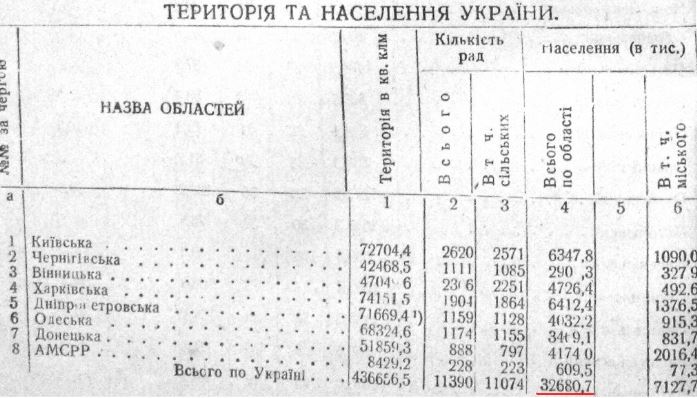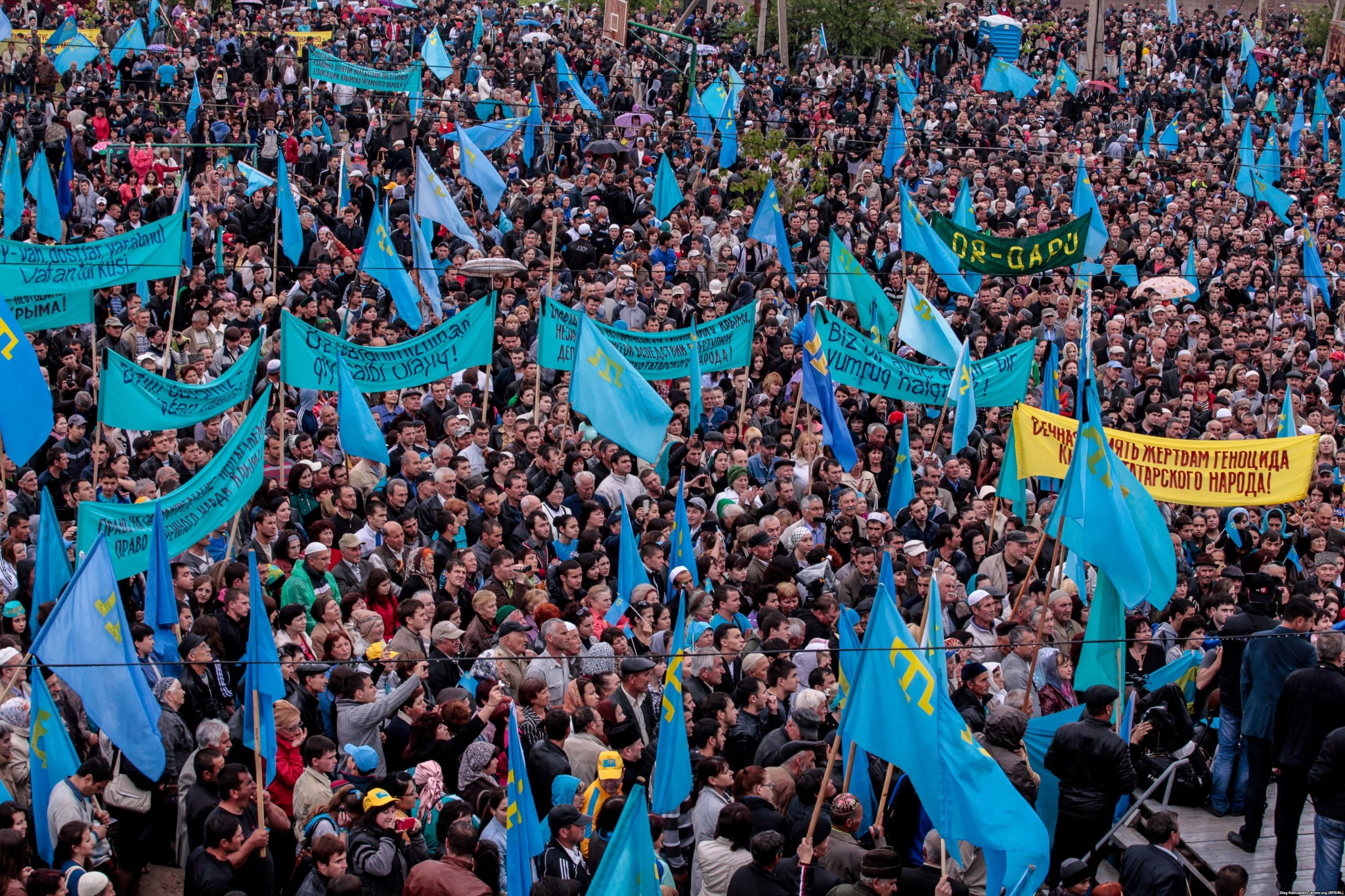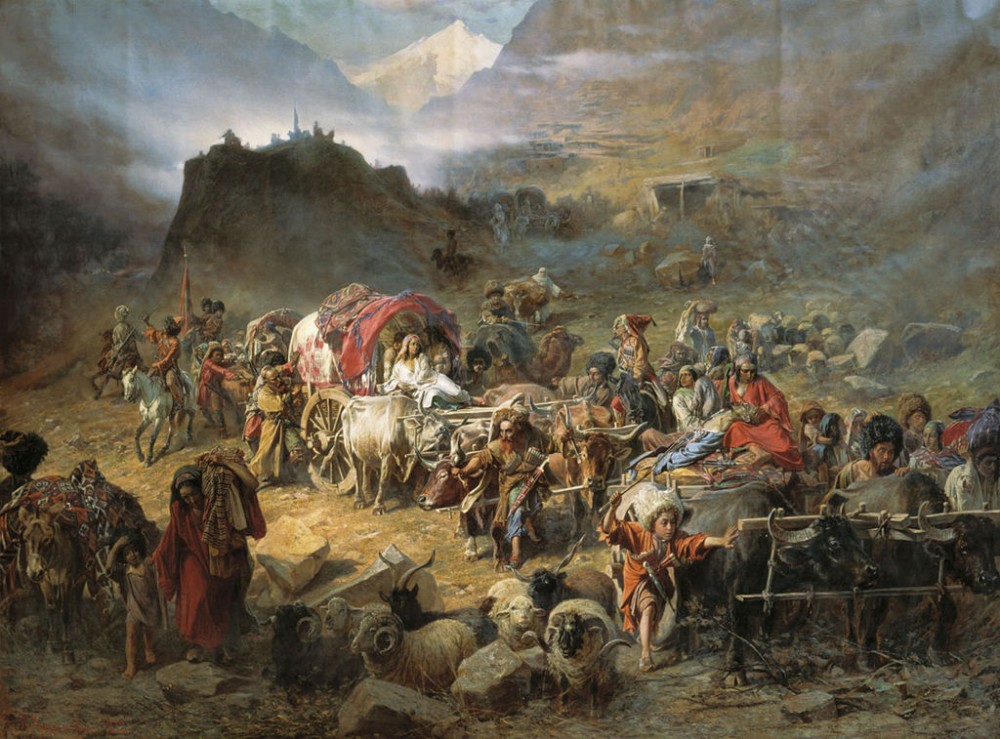The main issue being disputed is the number of people that died from starvation - it ranges from 1.8 to 15 million people. There is one point that parties from all sides agree with: establishing the precise amount of the dead is impossible. This is conditioned by the very nature of the crime and the poor work of the state registration offices in the Ukrainian SSR during 1932-1933. Therefore, this post will focus on the different estimates of losses and their justification.
The analysis is based on the assumption that the amount of those that died from starvation is calculated as the difference between the overall number of deaths and the "usual" background mortality that would have existed had there been no hunger. Neither the civil registrars nor the General Political Directorate of the NKVD carried out special estimates of the number of deaths caused by the Holodomor.
We made the following classification of factors conditioning a specific assessment of losses:
1. Personal impressions of the contemporaries of the famine
They were formed under the influence of what people saw with their own eyes and heard from direct witnesses. The figures named differed significantly. It could be "10 or 15 million souls," as the Italian Consul Sergio Gradenigo wrote in a letter dated 31 May 1933. And 18 million, of which the head of the choir "Dumka" Nestor Gorodovenko privately spoke of in August 1934. The figure of 7 million was also named, written by Kharkiv electromechanical plant worker Yakiv Sapsai, and which, as strange as it may sound, the proponents of this figure today use as an argument.
2. Versions-impressions in public statements
They were typical of western countries in the years chronologically proximate to the famine years. Such estimates were usually made on the basis of reports from the USSR. Despite mentions of the famine beginning to appear in the foreign press back in February 1933, the first specific public estimate of losses was made in early July 1933 by Richard Sallet, Harvard graduate and teacher of political science at Northwestern University. In a brief article in The New York World Telegram he voiced the figure of 10 million. Smaller figures were also voiced right after the events - from 1 to 5 million. Moreover, there were even figures that denied any losses whatsoever. As an example of this approach, we can recall the position of New York Times
correspondent Walter Duranty and the former French prime minister Edouard Herriot. In fact, it is through this kind of public denial of deaths from the famine made by authoritative persons and sympathy for Communism in western society that the problem of the Holodomor soon disappeared from public debate in the West. The diversity of the estimates of the demographic loss also played a negative role in this.

Thus, the first estimates did not contain any certain or coordinated figure of demographic losses. It could not have been otherwise because they were not based on any real calculations, which would have been possible only by applying statistical and demographic indicators. It should be noted that new estimates-impressions occasionally popped up in the years after, i.e. they appearance was not limited only to the first years after the famine.
3. Versions-calculations using a limited amount of statistical data
Chronologically, this period runs until 1989. The first calculations with the significant consequences were those that were made public in 1942 with the signature "S.Sosnovyi." They are calculated based on data from the current account of the population as of
1 January 1932 and 1 January 1933, known to the author, which were then compared with the results of the census in 1939. The calculations of Sosnovyi show a deficit of the population of about 7.5 million, but it is emphasized that this is not the amount of those that died from starvation but the general decrease of the population. The number of direct victims was estimated at 4.8 million, of which 1.5 million died in 1932, and 3.3 million - in 1933. And although other factors that reduced the population in the 1930's are not mentioned, and the consequences of the collectivization with its repressions and relocations of the so-called "kulak households" to the north of the USSR (this is what caused such high rates of loss in 1932) were basically ignored, this was still the first estimate made using statistical data.

The calculations of S.Sosnovyi gained the most recognition in the Ukrainian diaspora, and from there proliferated to the public discourse in modern Ukraine, without reference to the name of the researcher. However, this estimates was still one among the many. Overall, estimates from 2-3 million to 14-15 million have been sounded among the Ukrainian diaspora. Moreover, the more qualified the author of the calculations was, the smaller figure he/she named. For instance, the authoritative geography and statistic expert Vladimir Kubiyovych named 2-3 million, and the famous Ukrainian economist Vsevolod Holubnychyi observed that the number of deaths from starvation could not be more than 3 million. The specialists grounded their calculations on the results of the Census of 1926 and 1939, and also took into account that the demographic situation was influenced by factors other than the famine, especially de-kulakization and exile into the northern regions of the USSR in 1930-1931, repressions, deportation, reduced fertility and more. Extremely high numbers were based on the abovementioned estimates-impressions, which were formed without the use of demographic statistics. Robert Conquest attempted to take into consideration the observations of all parties in his famous book "Harvest of Sorrow," in which he estimated the number of deaths from famine in Ukraine at 5 million people
. We would like to note that the estimates from this third type are often used to this very day.

4. Estimates-calculations using verified baseline values
Census results are always taken as the base for further calculations. Unlike the famines of 1921-1923 and 1946-1947, the Holodomor of 1932-1933 occurred in the period between two censuses when there were no other huge demographic losses. This helped to determine the number of those that died specifically from starvation. When the statistical sources of the 1930's, and, especially, the repressed census of 1937 were opened up, it allowed verifying the baseline values for estimating demographic losses. In particular, it became clear that the census of 1939 was falsified and the current account data of 1931-1933 were greatly exaggerated. Estimates falling into this fourth type were made by researchers who tried to use these refined estimates as fully as possible. It is clear that these type of estimates started being made after the opening of the Soviet archives, which began in the last years of the USSR.
But even this significant addition to the database of sources did not bring unequivocal clarity to establishing the losses from the Holodomor. So again, we were dealing only with estimates of losses. The reason for this were the shortcomings of current statistical estimates in the period between censuses, and the presence of other factors that affected the dynamics of the population. Therefore, the results of these calculations differ, though not to the extent observed before the said statistical sources were opened. The differences are mainly caused by a lack of indisputable data on migration and different approaches to its assessment. Estimates of leading experts are demonstrated in the following table:
| Estimates of deaths due to starvation in Ukraine | |||
| Author | Date of publication | Period | Number of deaths due to starvation (millions of people) |
| Pyrozhkov S., Perkovskyi A. | 1989 | 1927-1938 | 4.0 |
| Kulchytskyi S. | 1989 | 1932-1933 | 3.5 |
| Rudnytskyi O. | 1990 | 1932-1934 | 3.8 |
| Andreiev Ye. et al | 1998 | 1933 | 4.0 |
| Vitkroft S. | 2001 | 1932-1933 | 3.0-3.5 |
| Vallen Zh. et al | 2002 | 1927-1938 | 3.7 |
| Maskudov S. | 2010 | 1927-1938 | 3.7 |
| Rusnytskyi O. et al | 2015 | 1932-1934 | 3.9 |
The table above is taken from the article "The loss of urban and rural population in Ukraine due to the Holodomor in 1932-1934: A new assessment," authored by Nataliya Levchuk, Tetiana Boriak, Oleh Wolowyna, Omelian Rudnytskyi, and Alla Kovbasiuk. In the table, they are referred to as "Rudnytskyi O. et al." This team of scientists carefully examined a large array of documents, including the current demographic statistics data for 1929-1939, which was not readily available for Ukrainian historians. It takes into account different migration flows and applies professional methods of calculation.
The research results were published in a number of papers that are available on the internet. In particular, the calculation methods are analyzed in detail in the article "Demographics of human-induced disasters: famine of 1932-1933. Ukraine" (see here and here). According to these researchers, 3 million 530 thousand people died from Holodomor in 1933. In 1932, 250 thousand died from starvation, and in 1934 - about 160 thousand. In just three years - 3.9 million, and 0.6 million
more of the unborn, or, as they are also referred to, "indirect losses." I.e., the total losses are 4.5 million.
One would assume that the emergence of professional calculations would overcome the inconsistencies in estimates of the death toll, which obstructed the formation of a consolidated position of the Ukrainian side in the attempts to obtain the international recognition of Holodomor as genocide. However, this year, a broad campaign to depreciate the result of the hard work of demographers was launched, and an attempt was made to return 7 million as the minimum number of losses from the Holodomor to the public discourse. In this, the previous estimates based on arguments that were seemingly completely rejected were partially resurrected. The final chord of such attempts was the International scientific and practical conference "The Holodomor of 1932 - 1933: losses of the Ukrainian nation," held on 4 October 2016 at the Taras Shevchenko National University of Kyiv. The press release sent out as a result of the conference noted that losses from the Holodomor in Ukraine were "at least 7 million" and this is supposedly "scientifically established." However, the conference was not attended by any scientist who professionally studied the topic, had relevant publications in professional journals, and voiced lower figures.
We have nothing against correcting the number of losses either up or down. However, this may happen only when verified and previously unknown documents enter into scientific circulation, whereas this year the arguments offered do not meet these criteria. In no way can one refute the assessment of demographers by referring to a non-existent "1931 census of the rural population" and pointing to "new data," which turned out to be well known before, including by Ukrainian demographers, and major statistical and economic directories from the economy of all regions of Ukraine already mentioned in the article by Sosnovyi in 1942. We would like to note that the compilers of these directories recognized them as needing correction. In addition, there was a call at the conference to include all people that died during 1932-1934 in the list of victims of the famine, i.e. do not disregard the natural mortality rate, which was 1.6 million over three years. For three years. In other words, it was proposed to assume that had there been no famine, people would not have died during 1932-1934. Disagreement with this proposal was evaluated as an expression of "immorality." In our view, this approach to the problem has nothing to do with science, and the tendency to distort facts and figures, including those of a tragic character, cannot be viewed as a criterion of "morality."
Summing up the review of estimates of demographic losses in Ukraine from hunger and famine in 1932-1934, we would like to emphasize that today the most reasonable estimates are of those demographers what indicate the total number of 3.9 million direct losses and 0.6 million indirect (unborn) losses over three years. These calculations take into account not only the maximum amount of indicators but also the shortcomings and achievements of their predecessors.
It is with a consolidated position, not with constant disputes and unsubstantiated losses, that a campaign for the international recognition of the Holodomor as genocide could be resumed. Otherwise, the representatives of the international community would have all grounds to say something like what once was said by a famous Russian professor:
"I recalled the far-away 1993. The then Ambassador of Ukraine Volodymyr Kryzhanivskyi organized a discussion between Ukrainian and Russian scientists on the topic of the famine of 1932-1933. When talking about the number of victims, called S.Kulchytskyi named the figure of 3,5-3,7 million. The discussion was attended by Ukrainian politicians. They were late, took the word and called out the number of victims of the famine - 7, 10, and even 15 million (including the unborn). Prof. Ivnytskyi took advantage of this, noting: "Dear Ukrainians, can you please figure it out among yourselves. One can't just toss around millions of one's own compatriots."
These words have a deep meaning. It is not right for us, even if it is only in estimates, to toss around millions of Ukrainians.
[hr]Read also:
- The history behind “Bitter Harvest,” dramatic movie about the Holodomor
- See which countries recognize Ukraine’s Holodomor famine as genocide on an interactive map
- Holodomor: Stalin’s genocidal famine of 1932-1933 | Infographic
- HOLODOMOR 1933: Light a candle in your window
- Documents show massive export of products from Ukraine during Holodomor
- History, Identity and Holodomor Denial: Russia’s continued assault on Ukraine
- Holodomor or death by starvation changes people’s genotype, say psychologists
- Stalin’s genocidal Holodomor campaign of 1932-33. What we know vs the denialist lies
- Why compare the Holodomor and the Holocaust
- Stalin starved populations to death to russify Ukraine, North Caucasus and Kazakhstan, statistics show
- Graphic novels on the Holodomor
- Stalin’s Holodomor in Kazakhstan, or a very brief guide to “The Goloshchekin genocide”





